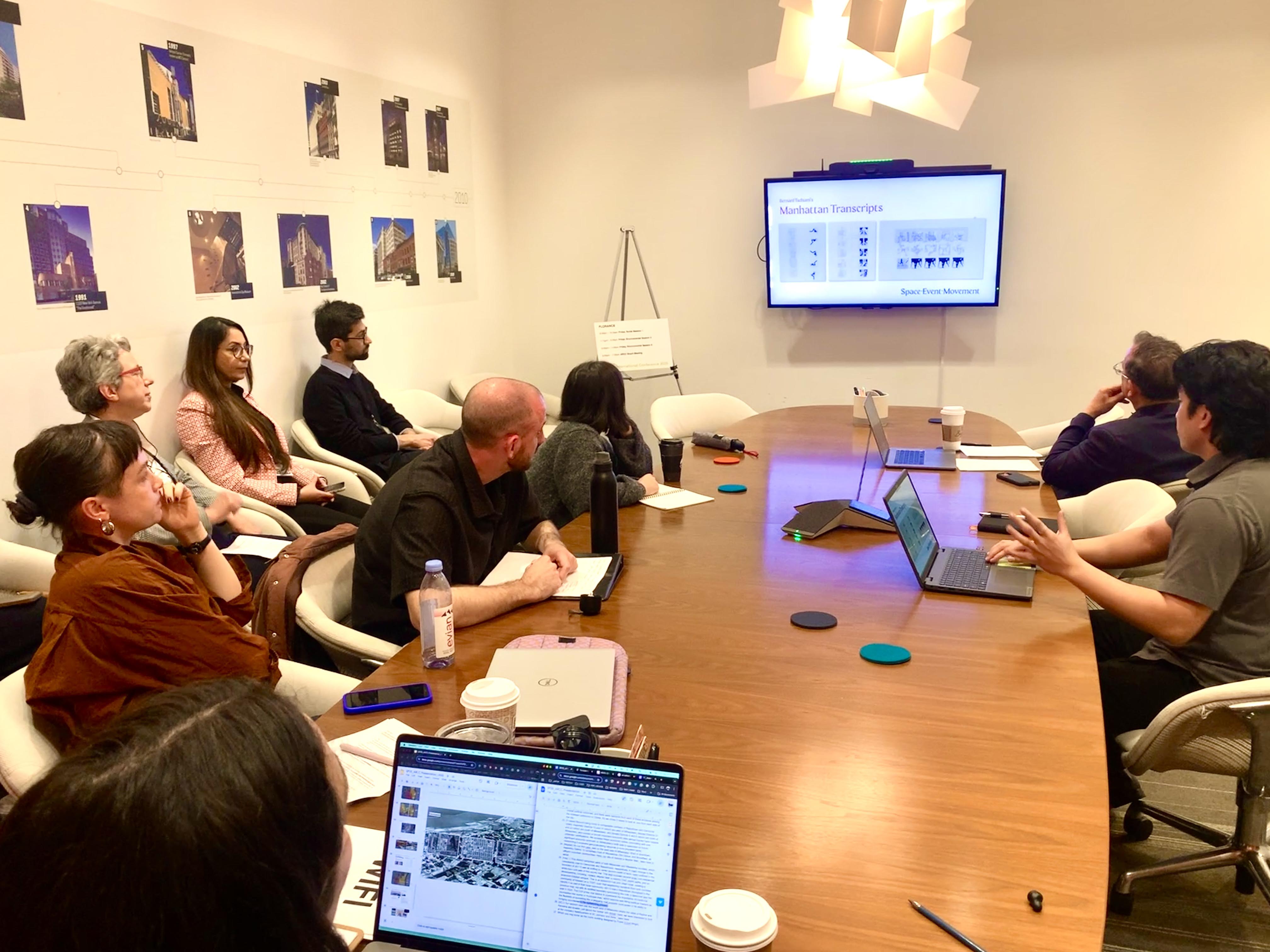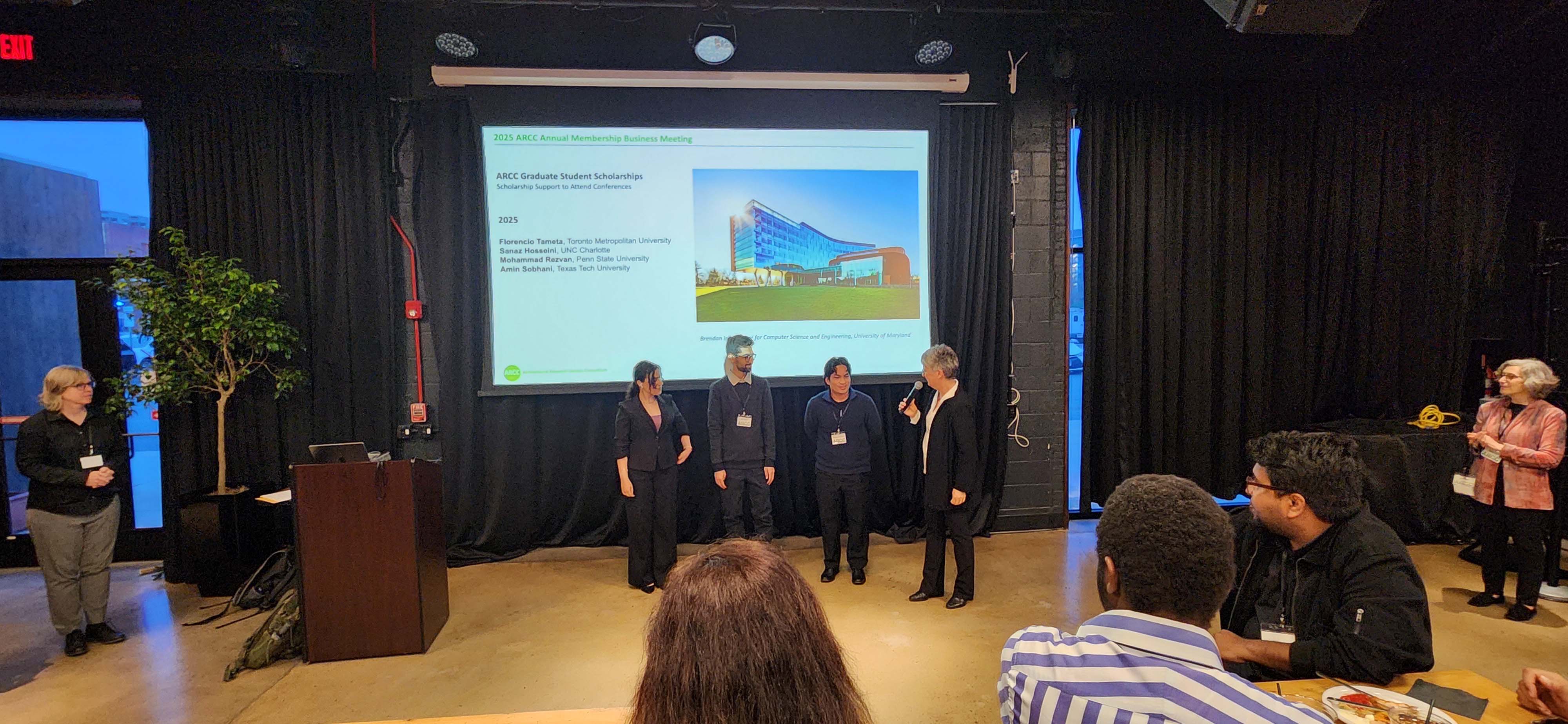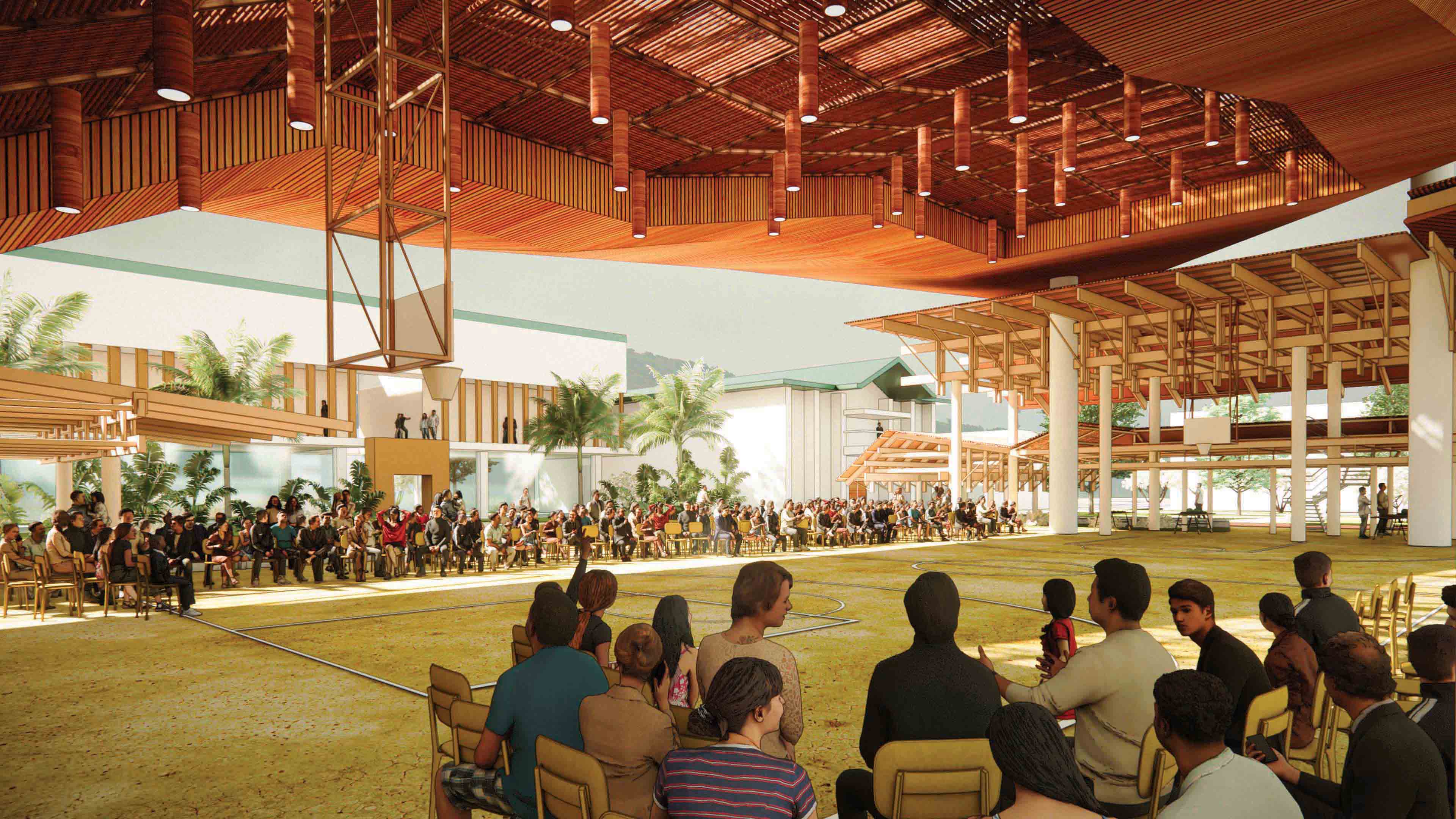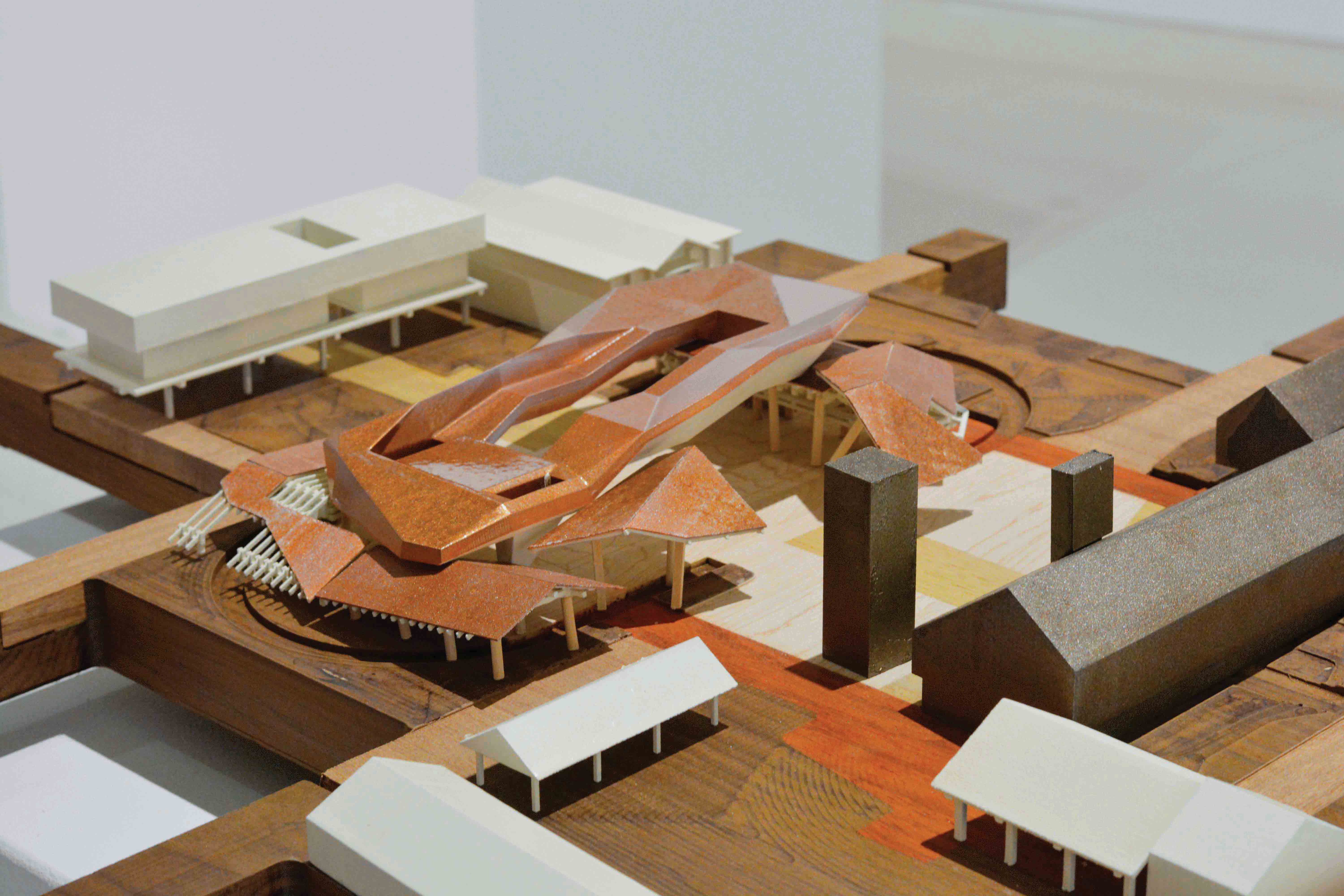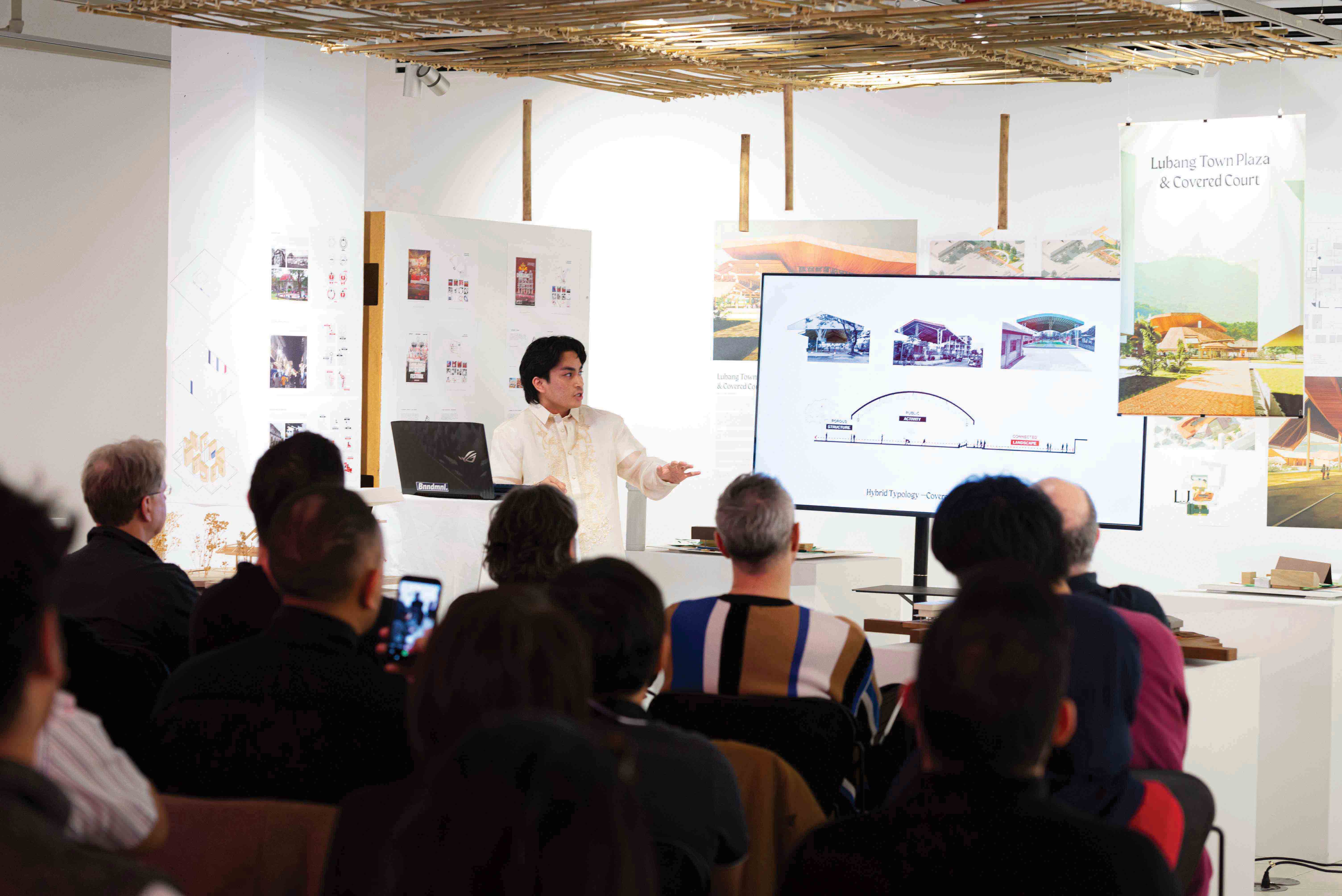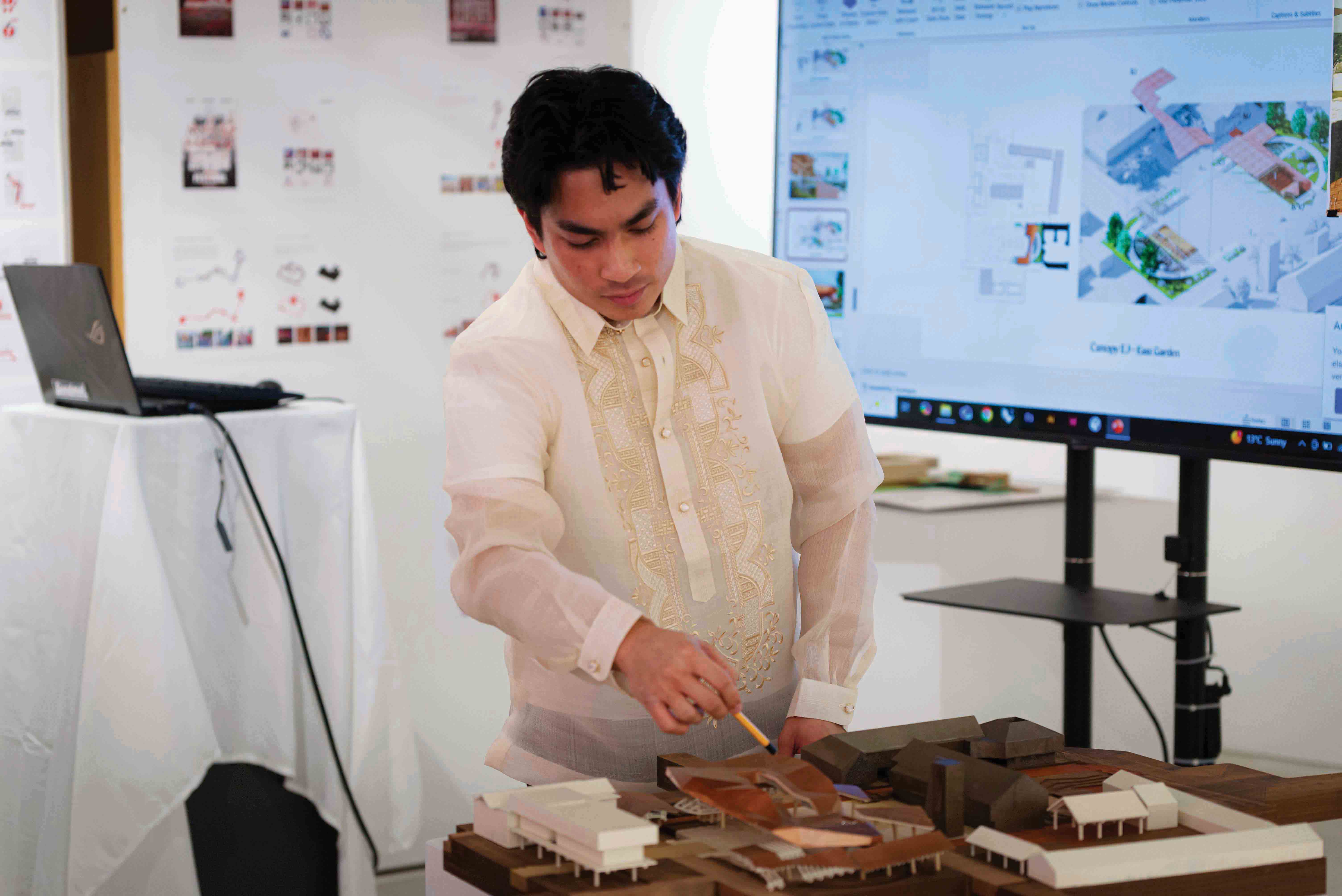MASTER OF ARCHITECTURE
Vince Tameta—RAIC Student Medal
![]()
Vince Tameta—RAIC Student Medal

About the Award
RAIC Student Medal:
For a student graduating from a professional degree program in each accredited University School of Architecture in Canada who, in the judgment of the faculty of the respective School, has achieved the highest level of academic excellence and/or has completed the outstanding final design project/thesis for that academic year.
My thesis research began as a way to reconnect with my Filipino and late father’s roots. I wanted to experience the stories of the humble probinsya lifestyle he adored. Architecture became a medium to understand his hometown in Lubang Island, Occidental Mindoro, as well as more broadly, the history of the Philippines. Over time, that personal curiosity grew into a deeper exploration of hybridity: how Philippine architecture constantly evolves through its layered and complex stories of identity, memory, and resilience.
___
The discourse on regionalism and global architectural culture often presents them as opposing forces. In the Philippines, both are evident: global practices manifest through land commodification, identity homogenization, and the exoticization of vernacular forms, while regionalism cites the bahay kubo and bahay na bato for their climatic and aesthetic qualities. However, Philippine architecture is fundamentally hybrid, shaped by centuries of cross-cultural exchanges. Its evolution illustrates a negotiation between pre-colonial, colonial, Modern, and contemporary influences. In this context, Philippine architecture is not defined by a fixed aesthetic but by its ability to stage an everchanging performance of cultural identity. Building on Barbara Allen’s Performative Regionalism, this thesis repositions architecture as an evolving backdrop for performing cultural practices and hybrid identities. Within this framework, Philippine fiestas become a central phenomenon to identity formation, where individuals actively participate in performances that express regional identities and negotiate conventional social structures. Through an analysis of fiestas celebrated in honour of the Santo Niño, this research developed the “Fiesta Transcripts,” mapping the relationship between architecture, urban space, and performance, to reveal architectural spaces that facilitate cultural activities such as covered basketball courts, town churches, streets, and plazas. An analysis of the evolution of Philippine architecture also revealed the practices of heritage, symbolism and hybridity as methods for expressing past and progressive visions of Filipino identities. Taking these methods, the design project returns to my late father’s hometown in Lubang Town Plaza, to propose a masterplan that builds on the cultural events that take place and showcase an everchanging regional identity of Lubang Island. The project focuses on the re-design of its covered basketball court, for its emergence as a distinctly Filipino typology that goes beyond its function as a sports venue, but also as a place for cultural production and identity formation.
___
This thesis became a way to give voice to Filipino perspectives in architectural discourse—ones that are under-represented but have so much to contribute to how we think about place, belonging, and identity. The journey has been incredibly rewarding. The honours of the RAIC Student Medal and Honour Roll are ones that I share with my family and the many people and places that shaped my thinking. This research took me beyond Toronto—to conferences in New Orleans and Washington, D.C., where I presented at the ACSA 113th Annual Meeting and the ARCC 2025 International Conference. Being able to speak about Philippine architecture on an international stage was humbling and affirming. At ARCC, my paper received the Best Student Paper Award, as well as a Graduate Student Scholarship to support my travel and participation. This experience taught me that architecture is more than form or aesthetics, it’s a medium for culture, a reflection of how people live, adapt, and evolve. I hope my career continues to ask how hybrid identities can be represented in design, and how architecture can hold space for Filipino perspectives. I also hope my experience encourages more students to explore their own roots through design, and to see architecture as a way of storytelling—one that connects people, places, and time.
RAIC Student Medal:
For a student graduating from a professional degree program in each accredited University School of Architecture in Canada who, in the judgment of the faculty of the respective School, has achieved the highest level of academic excellence and/or has completed the outstanding final design project/thesis for that academic year.
My thesis research began as a way to reconnect with my Filipino and late father’s roots. I wanted to experience the stories of the humble probinsya lifestyle he adored. Architecture became a medium to understand his hometown in Lubang Island, Occidental Mindoro, as well as more broadly, the history of the Philippines. Over time, that personal curiosity grew into a deeper exploration of hybridity: how Philippine architecture constantly evolves through its layered and complex stories of identity, memory, and resilience.
___
The discourse on regionalism and global architectural culture often presents them as opposing forces. In the Philippines, both are evident: global practices manifest through land commodification, identity homogenization, and the exoticization of vernacular forms, while regionalism cites the bahay kubo and bahay na bato for their climatic and aesthetic qualities. However, Philippine architecture is fundamentally hybrid, shaped by centuries of cross-cultural exchanges. Its evolution illustrates a negotiation between pre-colonial, colonial, Modern, and contemporary influences. In this context, Philippine architecture is not defined by a fixed aesthetic but by its ability to stage an everchanging performance of cultural identity. Building on Barbara Allen’s Performative Regionalism, this thesis repositions architecture as an evolving backdrop for performing cultural practices and hybrid identities. Within this framework, Philippine fiestas become a central phenomenon to identity formation, where individuals actively participate in performances that express regional identities and negotiate conventional social structures. Through an analysis of fiestas celebrated in honour of the Santo Niño, this research developed the “Fiesta Transcripts,” mapping the relationship between architecture, urban space, and performance, to reveal architectural spaces that facilitate cultural activities such as covered basketball courts, town churches, streets, and plazas. An analysis of the evolution of Philippine architecture also revealed the practices of heritage, symbolism and hybridity as methods for expressing past and progressive visions of Filipino identities. Taking these methods, the design project returns to my late father’s hometown in Lubang Town Plaza, to propose a masterplan that builds on the cultural events that take place and showcase an everchanging regional identity of Lubang Island. The project focuses on the re-design of its covered basketball court, for its emergence as a distinctly Filipino typology that goes beyond its function as a sports venue, but also as a place for cultural production and identity formation.
___
This thesis became a way to give voice to Filipino perspectives in architectural discourse—ones that are under-represented but have so much to contribute to how we think about place, belonging, and identity. The journey has been incredibly rewarding. The honours of the RAIC Student Medal and Honour Roll are ones that I share with my family and the many people and places that shaped my thinking. This research took me beyond Toronto—to conferences in New Orleans and Washington, D.C., where I presented at the ACSA 113th Annual Meeting and the ARCC 2025 International Conference. Being able to speak about Philippine architecture on an international stage was humbling and affirming. At ARCC, my paper received the Best Student Paper Award, as well as a Graduate Student Scholarship to support my travel and participation. This experience taught me that architecture is more than form or aesthetics, it’s a medium for culture, a reflection of how people live, adapt, and evolve. I hope my career continues to ask how hybrid identities can be represented in design, and how architecture can hold space for Filipino perspectives. I also hope my experience encourages more students to explore their own roots through design, and to see architecture as a way of storytelling—one that connects people, places, and time.
